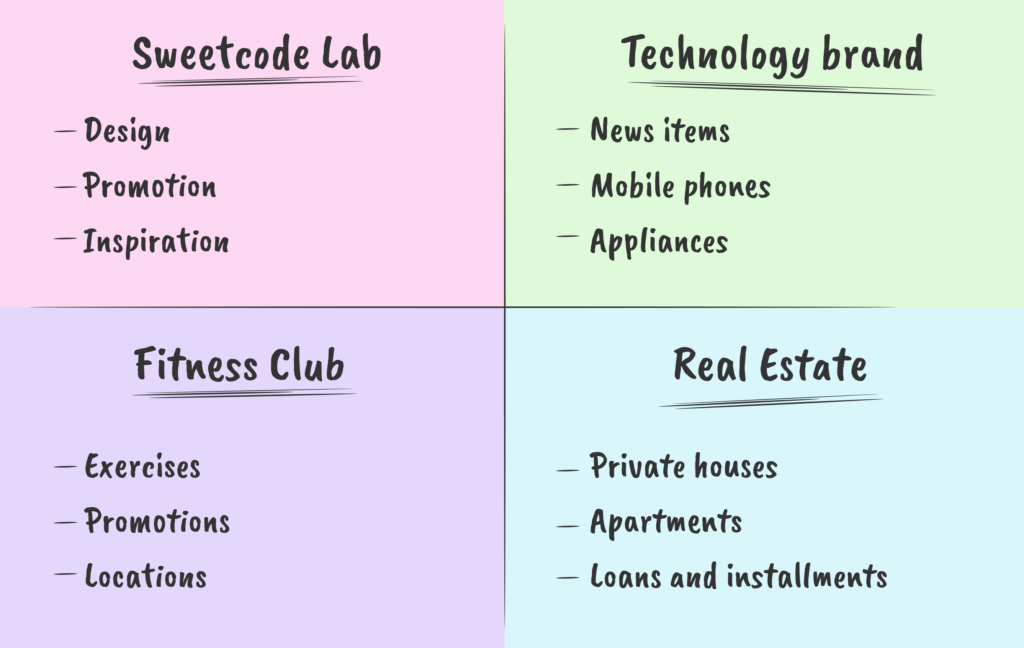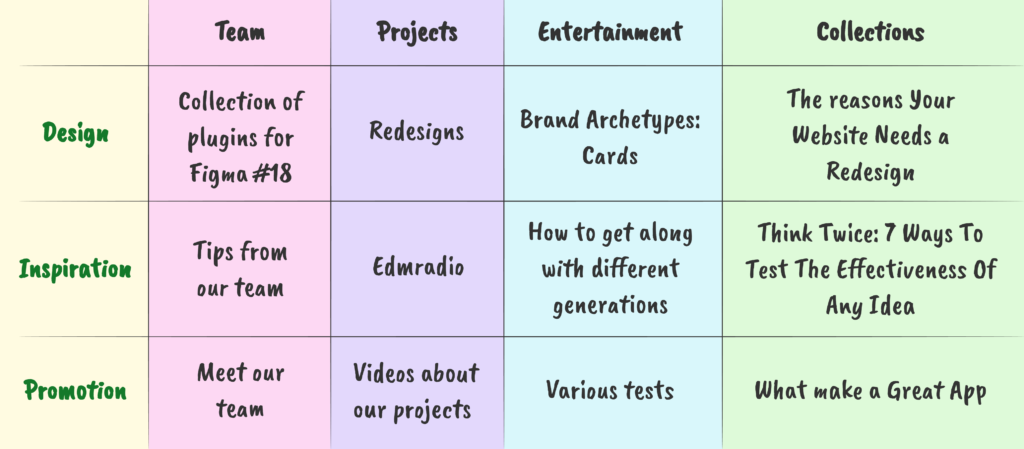Are you sure that you are giving users the content they need? This content matrix will help you create content pillars around your target audience.
And don’t feed your audience with the same type of information.
What is a content matrix?
A content matrix is a tool to help your company prioritize content production to ensure that your team focuses on the content production activities that matter.
Simply put, this is a spreadsheet for filling out a content plan for the weeks ahead. With the content matrix, you can create hundreds of ideas in an evening.
Before we go directly to the stages of creating a matrix, please remember an important aspect. We should create a User-Focused topic matrix. Anyone can make it in a spreadsheet, and the idea is that you develop pillars of content around your target audience.
Today, we will tell you an easy-to-use option, which our Marketing Manager uses when creating a content plan.
For your convenience, we have broken this process into stages:
1 Stage: Choose a Target Audience
Each matrix should have a specific target audience. The spreadsheet model means you can have multiple tabs for one quarter that plan out your content per target audience.
2 Stage: Horizontal
It all starts with a spreadsheet. You can use Coda or Google Spreadsheets: first of all, you need to write the top line’s publication formats.
For example: team, projects, entertainment, collections.

How we did it:
– PROJECTS – prove that our product or service works—a story about projects and completed cases.
– TEAM – here, our team gets to know the audience. We tell a little about ourselves and our professional tricks.
– COLLECTIONS – useful and interesting information is presented in the form of scrolling storyboards. Guides and infographics are often easy to follow and add a visual impact. For example: Check-lists, Digests, Brand Archetypes: Cards.
– ENTERTAINMENT- content like competitions, quizzes, games, and videos get people talking and actively engages with us.
Stage 3: Vertical
It would be best to write down the main headings in the first column – topics that you want to tell your subscribers regularly.
The rubricator topics are highly business-specific, but the main principle is to divide the main topics into categories.
Catch the example:

Stage 4: Start brainstorming
Ready to get started?
Here are a couple of tips to get started:
– Be thoughtful and thorough.
– Write the content that serves your users’ needs – not your idea of their needs.
Once you have written headings + formats, it becomes much easier to come up with.
An example of what we got:

Stage 5: Check your ideas
Remember, the amount of your content doesn’t matter. Quality is what you need to strive for. Before embodying an idea, ask yourself: “Is this interesting to my target audience?”
Then watch the statistics to get rid of unpopular headings in time and understand what your audience likes.
Over time, your matrix will become a sophisticated document that helps you get organized, focused, and poised to create a solid content strategy to meet your business goals.
